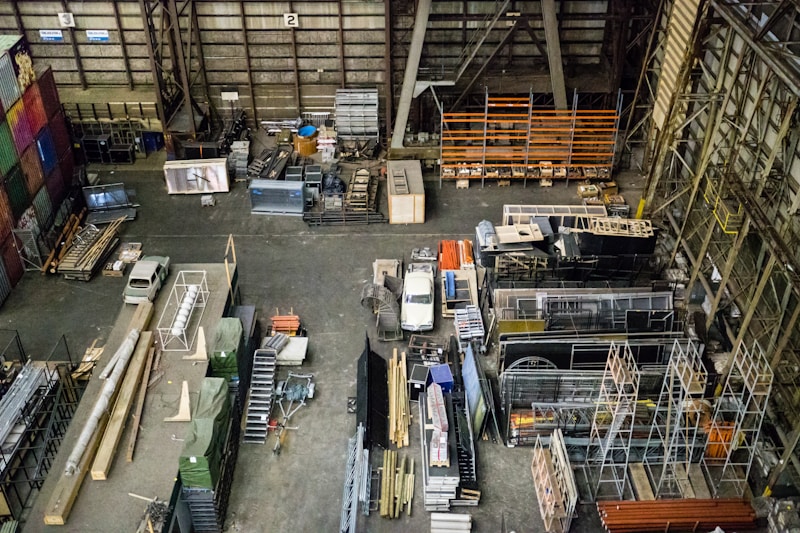Distinctive Photography Tips for Industrial Backdrops
Photography is an art, and when it comes to capturing the essence of industrial backdrops, it requires a unique set of skills and techniques. Industrial settings, with their raw and rugged aesthetics, can create strikingly beautiful images that resonate with a sense of authenticity and character. In this article, we will delve into distinctive photography tips specifically designed for industrial backdrops, demonstrating how to harness the inherent qualities of these environments to enhance your photography portfolio.
Understanding the Industrial Aesthetic
Before you pick up your camera, it's vital to understand what makes industrial backdrops unique. These environments are usually marked by:
- Textures: Rusted metals, peeling paint, and aged surfaces create a visual interest that adds depth to photographs.
- Geometry: Industrial settings often feature strong lines, patterns, and symmetrical structures that can create dynamic compositions.
- Lighting: Choosing the right time of day can dramatically affect how the textures and colors are perceived.
Essential Gear for Capturing Industrial Backdrops
Having the right equipment can substantially enhance your ability to create stunning photographs. Here are some essential tools you should consider:
| Camera | Preferably a digital DSLR or mirrorless camera for versatility and high-quality images. |
| Lenses | A wide-angle lens is ideal for capturing expansive industrial settings; a macro lens can help in focusing on textures. |
| Tripod | Important for stability, especially in low light conditions. |
| Filters | Polarizing filters can help reduce glare and enhance colors. |
Patience: The Photographer's Virtue
When working in industrial settings, patience is crucial. Unlike more controlled environments, industrial backdrops can be unpredictable and sometimes hazardous. Always take time to explore the area and find unique angles and features that draw the eye. Waiting for the right light or the perfect moment can make a significant difference in the quality of your shots.
Leveraging Natural Light
One of the primary advantages of industrial settings is the often dramatic natural light that can play across textures and forms. Here are some tips to harness natural light effectively:
- Golden Hour: Shooting during the golden hour (shortly after sunrise or before sunset) often brings out warm tones and adds a magical touch to industrial scenes.
- Side Lighting: Utilize the shadows created by side lighting to emphasize texture and depth.
Composition Techniques for Industrial Backdrops
Composition is the backbone of any great photograph, and industrial backdrops present numerous opportunities for creative framing. Here are some techniques to consider:
- Leading Lines: Use pathways, railings, and beams as leading lines to direct viewers' attention to the subject of your photo.
- Framing: Utilize the architecture and contours of the environment to frame your subject, adding an extra layer of interest.
- The Rule of Thirds: Place points of interest along the lines of a grid divided into thirds to create a more balanced composition.
Finding the Right Subject
To make your industrial photography stand out, it's essential to choose the right subject. Whether it's a person, a vehicle, or machinery, your subject should enhance the industrial backdrop. Consider elements that contrast with or complement the rugged aesthetic, such as:
- Color Contrast: Brightly colored subjects can pop against grey and rust-colored backgrounds.
- Human Element: Including a person can provide scale and a narrative to the scene.
Post-Processing Strategies
After capturing your images, the next vital step is post-processing. This can greatly enhance the overall aesthetic of your industrial photographs. Here are some tips:
- Contrast Adjustment: Boosting contrasts can help the textures stand out even more.
- Color Grading: Applying a cohesive color grade can unify the tones throughout the series of photos.

Common Questions About Industrial Photography
As industrial photography gains popularity, many photographers find themselves asking similar questions. Here are a few explorations into commonly searched inquiries:
1. What are the best times to shoot in industrial environments?
Typically, early mornings and late afternoons are ideal due to the softer light and longer shadows.
2. How can I ensure safety while shooting in industrial settings?
Always wear appropriate gear, be aware of your surroundings, and seek permission if you're in a restricted area.
3. Are there specific regulations to consider when photographing in industrial areas?
Yes, always check local laws and seek permission from property owners when necessary.
Final Thoughts
Capturing the essence of industrial backdrops requires a unique approach that embraces the beauty in decay and the artistry in functionality. Remember to invest time in understanding your environment, choose your subjects wisely, and embrace the natural light available. With patience and practice, your industrial photography can convey depth, emotion, and unparalleled character. As you embark on this artistic journey, remain open to experimentation and embrace every shot as an opportunity to learn.
In summary, effective industrial photography requires not just technical skill but also a deep appreciation for the industrial aesthetic itself. Always be mindful of your surroundings, practice safe photography, and most importantly, have fun as you explore this unique art form.